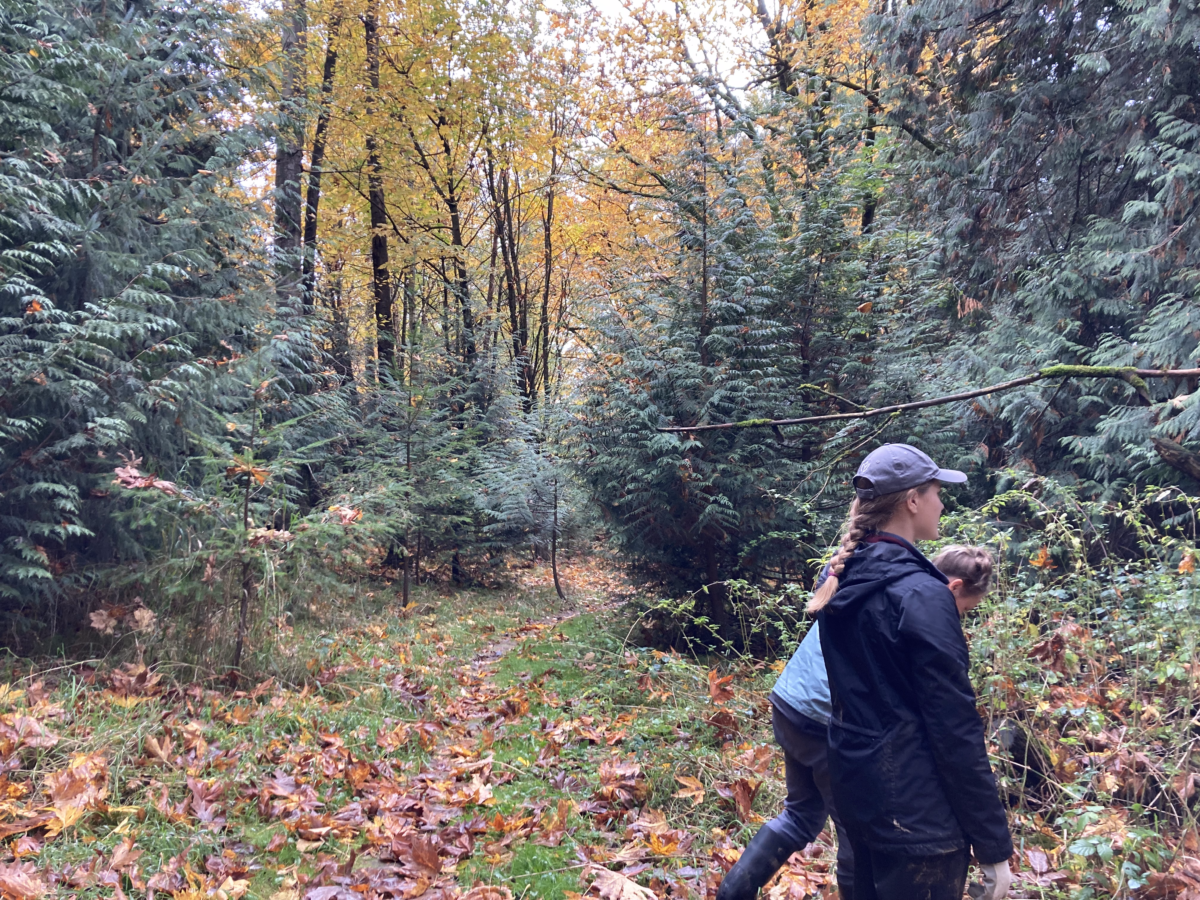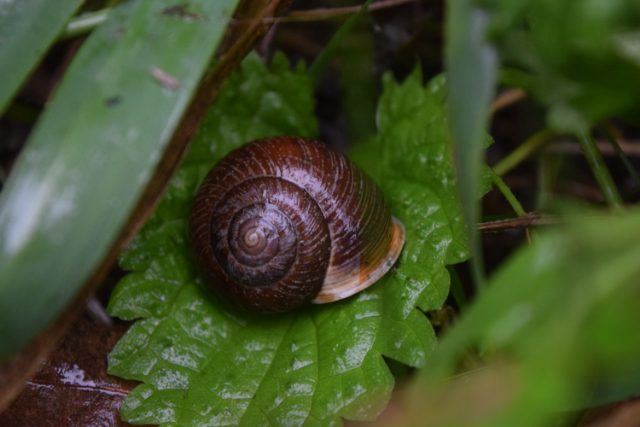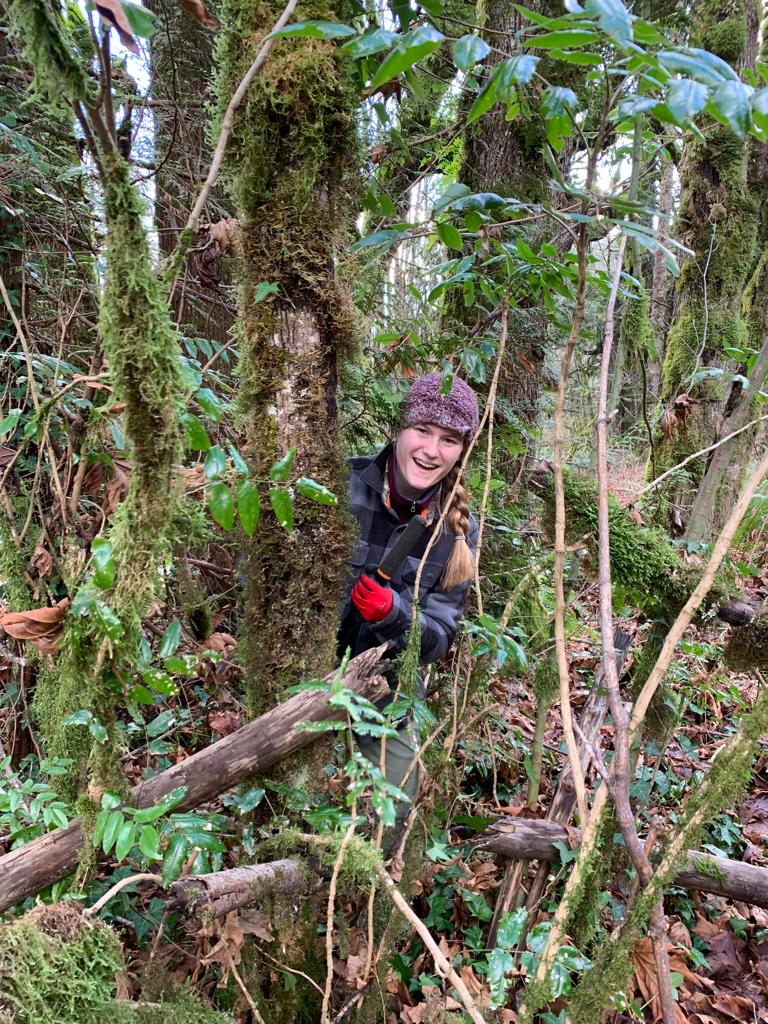
This past fall, the Lower Mainland Field Crew spent hours gazing with rapt eyes on leaf-littered forest floors with the hope of catching a glimpse of a particularly elusive species of snail, the Oregon Forestsnail (Allogona townsendiana). As an endangered species on the federal Species at Risk Act and the provincial Red list, this large native land snail proved rather elusive; the Crew even resorted to getting on their hands and knees and searching under stinging nettles and large leaf maples (markers of their preferred habitat). Sadly, the Oregon Forestsnail’s elusiveness is a result of its declining population. While it once used to roam the O horizon (the upper organic layer of soil) from Tsawwassen through the Lower Mainland, habitat fragmentation and increasing development have shrunk their critical habitat to a fraction of its former size.
With this in mind, The Nature Trust of BC has been working with BCIT students to begin the long process of species rehabilitation. BCIT students spent last summer assessing ten Nature Trust properties to find suitable habitats for Oregon Forestsnail translocations. The habitat characteristics that they searched for included malleable soils, leaf litter, maple species, stinging nettles, a combination of dense forests and edge habitat, and rather counter-intuitively, no current presence of Oregon Forestsnails (a silver lining to the Crew not sighting any of these terrestrial gastropods). Of the ten properties surveyed, only one was deemed a suitable habitat for future Forestsnail translocations, highlighting the difficulty of these types of restoration projects.

The Oregon Forestsnail is endemic to western North America and as an adult, it is identified by a thick white apertural lip (the lip surrounding the opening of a snail shell) and a deep central pit (the central hole on the underside of the shell). The shell is pale brown or straw-yellow and ranges from 28 to 35 mm. Since large native land snails are rare in the coastal forests of BC, the Oregon Forestsnail is a valuable component of the biodiversity of these environments. They sequester calcium and other minerals from their environment as well as perform important ecological functions as decomposers and consumers of plant matter. The Oregon Forestsnail may also function as a dispersal agent of native seeds, lichens, and fungi, adding to the biodiversity of their environment — albeit at a snail’s pace. Participating in the Oregon Forestsnail surveys showed the crew that even the smallest of species can play a key role in their ecosystems.

Thank you to BCIT Fish, Wildlife and Recreation students.
